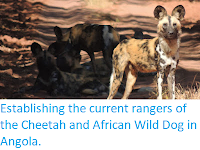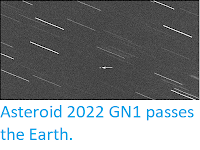The Yamato Salamander, Hynobius vandenburghi, was originally described from Yamato Province (modern Nara Prefecture) in 1923, and has a modern distribution across Osaka, Nara, Kyoto, Shiga, Mie, Gifu, and Aichi prefectures. Molecular data has suggested that this distribution consists of two monophyletic populations (i.e. each population can be traced back to a separate common ancestor, with little-or-no interbreeding since that time), one comprising the population on the Atsumi Peninsula (a 50 km outcrop of land in southern Aichi Prefecture, separating Mikawa Bay, to the north, from the Philippine Sea, to the south, with Ise Bay lying to its west) and the other all other living Yamato Salamanders. However, this understanding is currently based upon only a very small number of populations, so the true picture is likely to be more complicated, potentially with more distinct lineages within the whole.
In a paper published in the Bulletin of the Kanagawa Prefectural Museum on 29 March 2022, Hirotaka Sugawara of the Faculty of Science and Technology at Kochi University, Takeshi Fujitani of the Higashiyama Zoo & Botanical Gardens, Shota Seguchi and Takuo Sawahata of the Graduate School of Agriculture at Kinki University, and Masahiro Nagano of the Faculty of Science and Technology at Oita University, evaluate the distinctiveness of the two 'Yamato Salamander' groups using morphological, phylogenetic, and evolutionary species concepts, and formally describe the Atsumi Peninsula population as a separate species.
Sugawara et al. took tissue samples from live Salamander specimens collected on private property or in fields from February 2007 to April 2021, from which DNA was extracted, another 55 specimens were anesthetized and measured for morphometric analysis (a tool used by palaeontologists, archaeologists, anthropologists and forensic pathologists to analyse and compare specimens, which involves taking numerous measurements of an object such as a bone or shell, and comparing both these measurements and ratios between measurements to those obtained from other specimens in order to establish relationships between them), with the majority then released back into the wild; three specimens from Atsumi were retained, providing a holotype and two paratypes of the new species. Samples were taken from a total of seven populations.
Two phylogenetic analyses were performed, including the collected samples and including other Hynobius species, and Salamandrella keyserlingii as the outgroup. The analysis based upon posterior probability values supported the concept that all specimens currently assigned to Hynobius vandenburghi form a monophyletic group (i.e. they share a single common ancestor from which they are all descended, with no specimens not assigned to the species being descended from that ancestor), however, an analysis based upon bootstrap values did not support this conclusion. Both the posterior probability and bootstrap analyses supported the conclusion that the two populations were themselves monophyletic groups, exclusive of one-another.
The new species is named Hynobius owariensis, where 'owariensis' means 'from Owari' (an old name for Aichi Prefecture). In this species the males tend to have a mottled pattern on their throats (generally absent or indistinct in Hynobius vandenburghi), but seldom had distinct black dots on the dorsum, distinct white dots on the venter, or distinct white dots on the lateral side of the body (generally present in Hynobius vandenburghi). Nor did they have a distinct and bright yellow line on the dorsal and ventral sides of the tail, something typically seen in Hynobius vandenburghi.
Sugawara et al.'s study only included specimens from Aichi, Nara and Osaka prefectures, despite Hynobius vandenburghi being much more widely distributed, due to the high level of protection given to the species by Japan's strict conservation laws. This raises the distinct possibility that other, undiscovered cryptic species are hidden within this range, raising further concerns for the future of these Salamanders. As it is, the population of Hynobius owariensis comprises a number of isolated populations, each too small to be realistically viable. Attempts to address this have included at least one case of specimens of Hynobius vandenburghi being introduced to a park in the city of Nagoya-shi. Sugawara et al. therefore recommend that a conservation plan specific to the needs of this species by drawn up as a matter of urgency.
See also...
See also...


Follow Sciency Thoughts on Facebook.
Follow Sciency Thoughts on Twitter.







































